- Books
- Articles
- The Tribes
- Presentations
- Bonus Material
Ancient History Reconsidered
A comprehensive re-evaluation of the evidence leads to
a complete rewrite of our understanding of ancient history!



King David’s nephew, Abishai. 12th Dynasty tomb of Khnumhotep II at Beni Hasan. Did You know?In his book Mycenaeans and Minoans (Faber & Faber, London 1965), Leonard B. Palmer, professor of comparative philology at Oxford University, who was involved in the translation of the Greek Linear B tablets, capably demonstrated that Sir Arthur Evans’s famous ‘Système de Classification’, which provides a pottery sequence for Minoan pottery, is greatly flawed. Even Duncan McKenzie, who took over from Sir Arthur Evans, was at a loss to understand how his employer had arrived at this elaborate classification seeing that the only Early and Middle Minoan pottery discovered on site was from test pits, such pottery being of insufficient quantity to provide any indication of date let alone any distinct sequence. Palmer also demonstrated that a pot classified as Late Minoan (LM) II was in course of being made when the palace was destroyed in the LM IIIC period by which time such pottery was supposedly no longer being made. He also found LM IIIC pottery underneath a pavement clearly dated to the earlier LM IIIB period. Despite all this, Evans’s fabricated pottery sequence remains canonical and is still defended to this day. The renowned Swiss archaeologist Edouard Naville warned us in his book on Bubastis that the kings of the Egyptian 19th and 20th dynasties were guilty of appropriating the monuments of their predecessors and claiming for themselves the works of former generations. Sir William Flinders-Petrie noticed the selfsame problem with the 21st Dynasty rulers who had a strange fascination with their 18th dynasty counterparts. The 21st dynasty king Psusennes I even appropriated and re-engineered the coffin of the 18th dynasty king Thutmose I, utilising it for his own burial. The Assyrians were also guilty of appropriating the monuments of their predecessors. Many of the monuments on which the archaeologists have placed so much unwavering trust turn out to either be forgeries, or have been re-engineered by later kings. In my book Ancient History Reconsidered I do a full analysis of both the Assyrian and Egyptian King Lists and completely pull them apart, demonstrating just how contrived they actually are. Archaeologists have simply not questioned or challenged anything. They are simply manipulating the archaeological evidence and making it fit these contrived chronological lists of kings which lists have all been compiled at a relatively late date. The Assyrian King List, for example, was compiled during the time of Darius II king of Persia, this being more than 100 years after the fall of the Assyrian Empire. When properly scrutinised, it becomes perfectly obvious that the people who contrived these lists were either totally ignorant of their own history or (what is perhaps more likely) they were deliberately trying to deceive people into believing in the great antiquity of that nation. The Greek writers Herodotus, Diodorus and Strabo all describe the flying lizards, which, in their day, were occupying the forested hills of Saudi Arabia. These creatures are said to have migrated to Egypt annually each Spring. These Greek writers not only described what they looked like, but also described their habits and their migrations. According to Herodotus, they looked like water snakes with bat’s wings (Herod. ii.75 and ii.76), with Diodorus and Strabo both informing us that they were a span (i.e. 7½ins or 9cms) in length, which means that they were probably of the genus Sharovipteryx. They were either red or orange in colour and were highly venemous, or, as Diodorus puts it, “their bites altogether incurable” (Diod. iii.47.2). Pliny called this creature a jaculus or javelin-snake, because it would shoot from the tops of trees as if fired from a catapult. (Nat. Hist. viii.35 (85)) These writers inform us that they could swoop and glide, but could not actually fly in the strict sense of flying. To get to Egypt, they would therefore have had to travel through southern Judea, which makes them the fiery flying serpents of Isaiah 30:6. Despite all of this documented evidence, archaeologists and paleontologists all insist that these creatures disappeared off the face of the earth around 125 million years ago and that dinosaurs in general disappeared off the face of the earth some sixty five million years ago. (See for example the article “When Did Dinosaurs Go Extinct?” in Science Daily dated 28 Apr 2008 and the article “Dinosaurs Ten Million Years Older than Thought” in National Geographic dated 3 March 2010.) In my video When Crocodiles Became Whales I demonstrate how these evolutionist scientists interpret the evidence according to what they want the evidence to show them. In my Dinosaur Heresy video I show categorically that dinosaurs existed alongside humans and lived right up to relatively recent times. Sir William Flinders-Petrie discovered that objects which he originally assigned to the 5th and 6th dynasty were actually of 25th dynasty style, hence scarabs belonging to the 5th dynasty kings Menkare and Zedkare were redated by him to the later 25th (i.e. Ethiopian) Dynasty (Petrie, History of Egypt, Vol. 1, p.92). Likewise, pottery as well as scarabs dating to the time of the 6th Dynasty king Pepi II were moved forward to the 25th Dynasty when it was realised that they belonged to that period (Petrie, History of Egypt, Vol. 1, p.116). No one seems to have taken into consideration these later emendations by Flinders-Petrie. What archaeologists are referring to when they talk about the Egyptian 5th and 6th dynasties and date to around 3,000 bce is in fact the Ethiopian period and is more correctly to be dated no earlier than the end of the 8th century bce and the beginning of the 7th century bce. In my book Ancient History Reconsidered I demonstrate that further deceptions are introduced by the fact that artefacts which have been assigned to the 25th Dynasty kings Taharka and Shabaka actually belong to two similarly named kings who ruled towards the end of the Persian Period and beginning of the Greek Helenistic Period some 400 years later! This is according to conventionally accepted dates. In reality, the chronology of the Persian Period needs to be reduced by around 150 years. Shabaka is referred to by Arrian as “Sabakes, viceroy of Egypt” (Anabasis of Alexander 2.11.8) informing us that Shabaka was ruling Egypt during the time of Alexander the Great. All of this is explained in my book Ancient History Reconsidered. If you want to read a more simplified abridged version of my reconstruction of the Egyptian, Assyrian, Chaldean and Persian (Achaemenid) Periods of history, you could instead read my papers entitled Manetho on Trial, An Analytical Review of the Campaigns of Sennacherib from a Biblical Perspective and A Radical Review of the Chaldean and Achaemenid Periods. When the spies sent out by Moses returned from reconnoitring the Promised Land, only Joshua son of Nun and Caleb son of Yefunneh brought back a good report. Although attached to the tribe of Judah, Caleb was not an Israelite. We are told that he was given a possession amongst the tribe of Judah. (Josh. 15:13) Caleb was a Kenezite (Josh. 14:6); a son of Kenaz (Josh. 15:17). Duke Kenaz was son of Duke Eliphaz. (Gen. 36:11 & 1 Chron. 1:36) In other words, Caleb was an Edomite. The Greeks called the Calebites Chalybes referring to them as Chaldeans (e.g. Strabo xii.iii.19). Bit-Iakin, one of the largest of the Chaldean tribes (e.g. see Wikipedia entry Chaldea), was likewise named after the Edomite tribe of Yaakin (also written Akan) “son of Etser, son of Seir” (Gen. 36:21 & 1 Chron. 1:38). In Ancient History Reconsidered, I likewise reveal that the Chaldean king Nebuchadnezzar II and his family were Edomite. The mention of Kennizites, Kenites and Kadmonites in Gen. 15:19 is an anachronism. Duke Kenaz, who was one of the sons of Eliphaz, son of Esau (Gen. 36:11), had not at that time been born. The Kenites were likewise Midianites, descendants of one of Abraham’s children born to him by his second wife, Keturah. Hobab, who is said in Judg. 4:11 to be the ‘father-in-law’ of Moses, was more correctly a brother-in-law of Moses, that is, a son of Moses’ father-in-law Jethro, a person who, according to Exod. 2:18, was also known as Reuel, both names pertaining to the same person. Josephus translated the name Reuel as Raguel, informing us that Jethro “was one of the names of Raguel”. (Antiquities ii.xii.1), The Kenites were descended from Hobab son of this Reuel/Jethro.(Judg. 1:16 & 4:11) I would here point out that the word חֹתֵן, which is translated as ‘father-in-law’ in Num. 10:29 and Judg. 4:11 can also mean ‘son-in-law’, as in Gen. 19:12, where it is transcribed as חָתָן - the same three Hebrew characters, only pronounced differently. These Kenites assisted Israel when they came out of Egypt. (1 Sam. 15:6) Neither the Kenites nor the Kennizites existed during the time of Abraham. The ‘Kadmonites [Hebrew קַּדְמֹנִי Kadmoni] are otherwise unattested by this name, but is clearly to be read as ‘easteners’ and appears to be a reference to Ammon and Moab who, after Israel were taken into captivity, flooded over the River Jordan to claim for themselves the land which was now theirs for the taking. Not only Josephus, but the books of Ezra and Nehemiah also make it perfectly clear that these sons of Lot were firmly established in the land of Israel when Judah returned to the land from Babylonia and Assyria. According to the Babylonian Talmud: “Cyrus, Darius, and Artaxerxes were all one. He was called Cyrus because he was a worthy king; Artaxerxes after his realm; while Darius was his own name” (Rosh HaShana 3b) We know from the Babylonian records that Darius III also used the name Artaxerxes. What people do not realise is that Darius III also went under the name of Cyrus the Younger. When we compare the accounts of the deaths of these two kings, we find that there are striking similarities. Both are said to have died of multiple spear wounds and both are said to have been killed by the king of Persia Artaxerxes II Arsaces killed Cyrus, whilst Artaxerxes V Bessus killed Darius. Interestingly, Bessus is not a Persian name. You will not find the name Bessus either in the Persian records or the Babylonian records of this period. In fact, we have a monument in the British Museum (BM 2 51) which tells us that the king of Persia during the time of Alexander the Great (hence during the reign of Darius III) was Arsaces, i.e. Artaxerxes II. On further investigation, we discover that Clearchu, who arrived too late too late to save Cyrus, was one of Alexander the Great’s Generals, and when Plutarch records that the Greeks were conquering and making themselves masters everywhere (Artaxerxes 12), he is referring to this invasion by Alexander the Great and not some unknown invasion of Greeks which purportedly took place some 100 years previously. |
IntroductionAccording to the classical Greek writers, the Egyptian 12th Dynasty was the greatest and most prosperous of all the Egyptian dynasties. Archaeologists contest this statement and assure us that the 18th – not the 12th – was the greatest and most prosperous of all the Egyptian dynasties. The renowned American archaeologist and historian James Henry Breasted, in discussing the Egyptian 12the Dynasty, informs us that the record of Senusert III’s achievements on the stele of Sebek-khu, who was one of the king’s attendants, contains “the only mention of an invasion of Syria by any Pharaoh of the Middle Kingdom”. (Ancient Records of Egypt Vol. 1, p.302, §.676) By contrast, it is from the 18th Dynasty that we obtain a veritable wealth of monumental and documented evidence which testifies to that period being the richest and most influential of all dynasties. Despite this, no one seems to have questioned why the Greeks never once mentioned the achievements of any of the 18th Dynasty kings! Even Edouard Naville in 1892 noticed something seriously wrong with excavations at the city of Bubastis, but did not come to the obvious conclusion: “In every place where excavations have been made, either by our predecessors or by ourselves, if not statues or larger monuments, at least names have been discovered of the twelfth dynasty, of the thirteenth, or even much more ancient kings belonging to the fourth or the fifth, but nothing whatever of the seventeenth or of the eighteenth. Except the serpent of Benha, now in the museum of Ghizeh, and which dates from Amenophis III, before our discoveries at Bubastis no monument of the Delta could be attributed with certainty to those princes. It would be extraordinary, however, that wherever an excavation has been made, at Tanis, Pithom, Nebesheh, Tell Mokdam, Khataaneh, Tell el Yahoodieh, Saft el Henneh, especially in the localities where ancient monuments have been discovered, precisely those of the seventeenth and eighteenth dynasties should have disappeared.” (Bubastis (1887-1889) p.29, Edouard Naville, 8th Memoir of the Egyptian Exploration Fund, London, 1891.) It is when we compare these two purportedly distinct periods of history, which are supposedly separated by some 500 years, that we discover the truth. Not only the stratigraphic evidence, but evidence of pottery and art and comparison of the statues from the two periods all confirm that the 12th and 18th Egyptian dynasties were one and the same period of history, with the 13th and 14th dynasties which intervene, being shown to be spurious. The Egyptian priest-historian Manetho has cleverly compiled his Dynastic Lists of Egyptian kings in such a way as to make us believe that the Egyptian history was much longer than it actually was. Archaeologists, who have not questioned or challenged what Manetho has told us, are simply manipulating the archaeological data, albeit unwittingly, to fit this contrived chronological framework. If you want to know how the Assyrian chronology can be reduced by one thousand years, and the Egyptian chronology by as much as two thousand years, then read on... Documentation
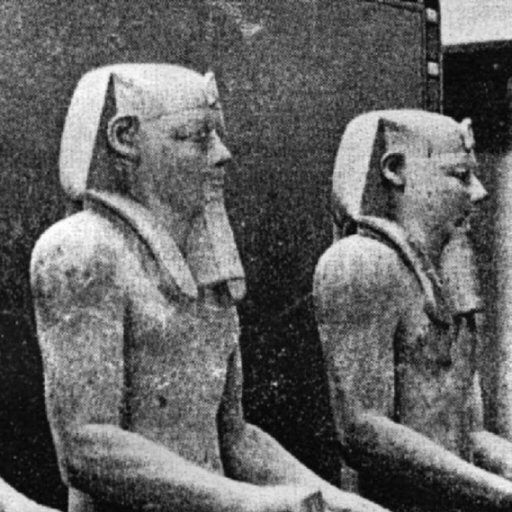 Two statues of Anemenhat I
Two statues of Anemenhat Ifrom Lisht 12th Dynasty 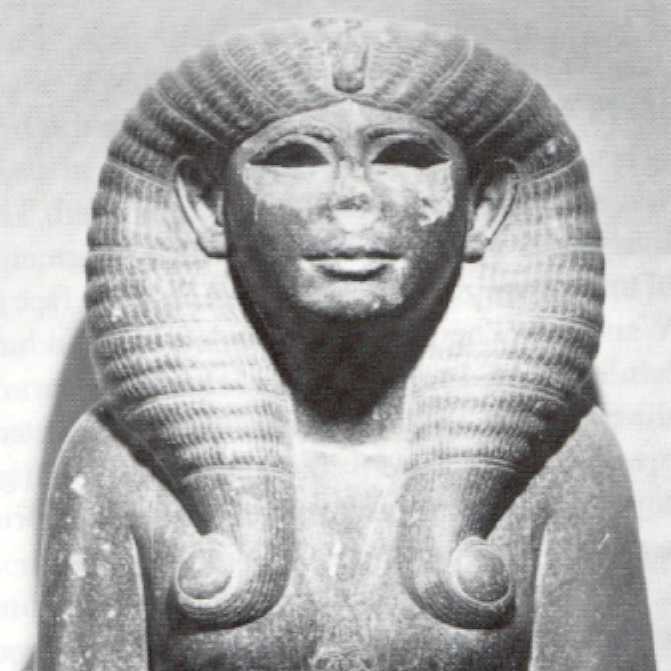 Queen Nefert
Queen Nefert 12th Dynasty  Senusert I in Osiride form
Senusert I in Osiride form12th Dynasty 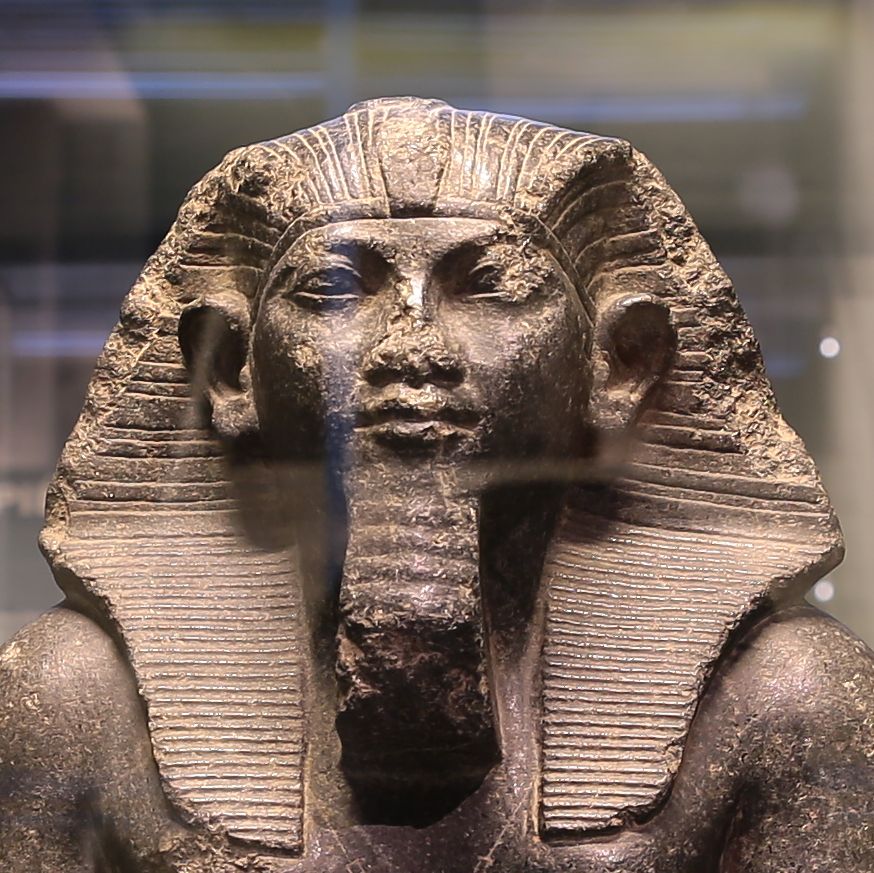 Senusert II
Senusert II12th Dynasty  Royal Daughter Hatshepsut
Royal Daughter Hatshepsut-Stele of Au 12th Dynasty 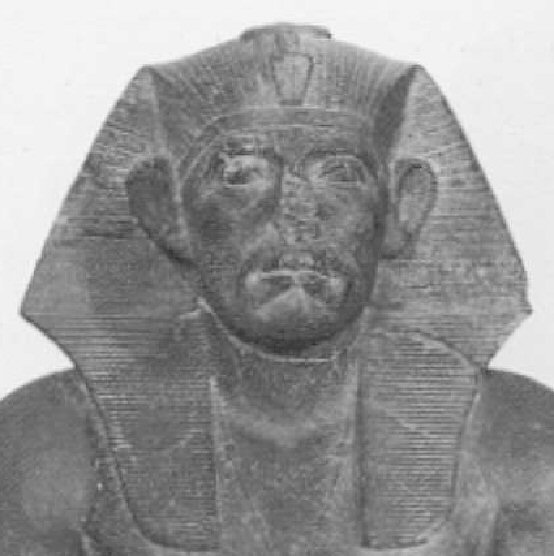 Senusert III
Senusert III12th Dynasty 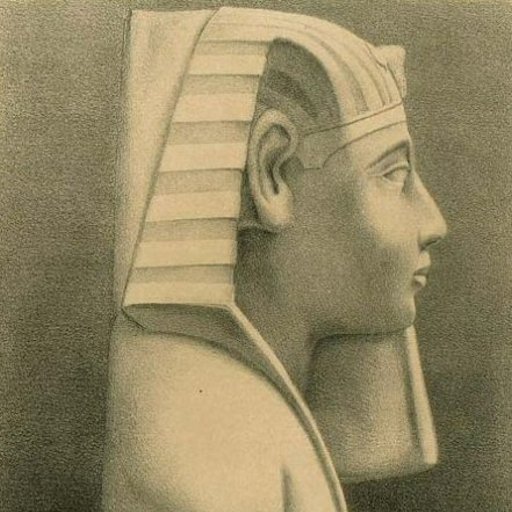 Amenhotep I
Amenhotep I 18th Dynasty 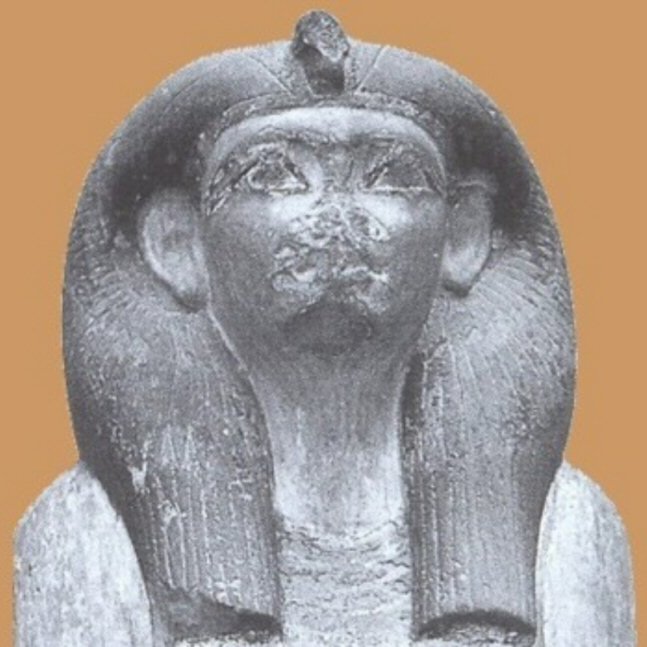 Queen Mother [Mut-]Nefert
Queen Mother [Mut-]Nefert18th Dynasty 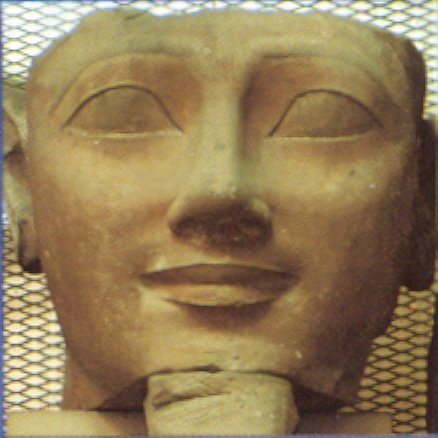 Face Mask of Thutmose I
Face Mask of Thutmose I18th Dynasty 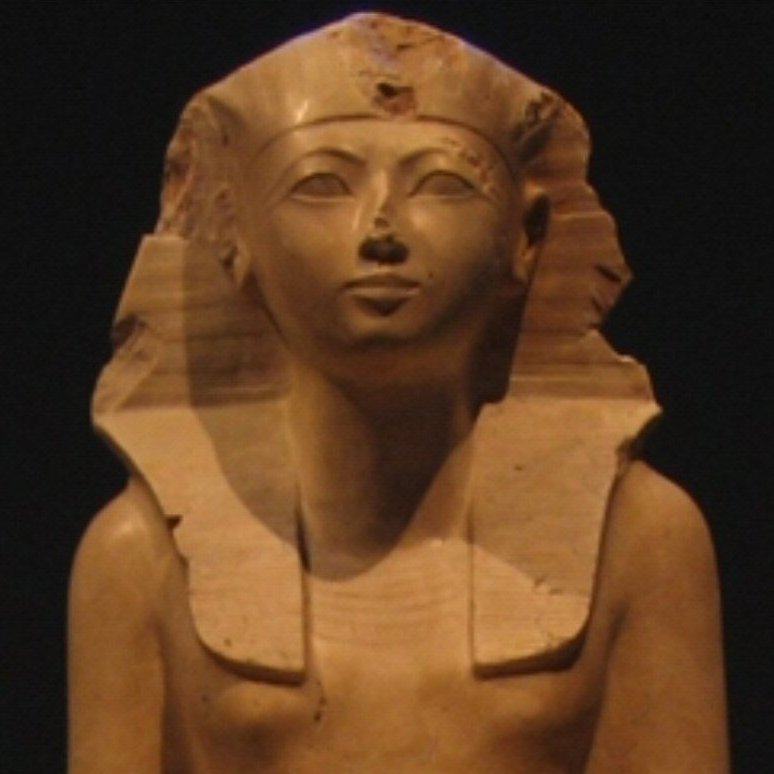 Thutmose II
Thutmose II18th Dynasty 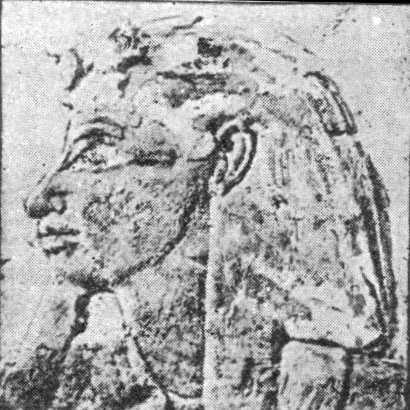 Queen Hatshepsut
Queen Hatshepsut18th Dynasty  Mummy of Thutmose III
Mummy of Thutmose III18th Dynasty The above slideshow demonstrates that, despite being separated by 500 years, the 12th and 18th dynasties were one and the same period of history. In Ancient History Reconsidered we demonstrate that everything from the testimony of pottery and art to stratigraphic evidence supports this conclusion. |

King Josiah being killed by Pharaoh Necho. 
Steve Phillips About the AuthorMy name is Steve Phillips. I am not affiliated to any group or organisation of any kind. All the articles on this site are my own work and are the result of more than 30 years of private research. When I first started studying the archaeological evidence I had to spend hours in the Central Library here in Birmingham reading archaeological reports which you would find in publications such as those produced by the Egypt Exploration Fund. There was no internet back then. If the Central Library did not have a particular book or work of reference, then I had to obtain them through inter-library loan requests. Nowadays most of these books have been digitised and are available for viewing and often also for downloading online. The internet has allowed us to access a veritable wealth of information as well as other scientific data which would otherwise be inaccessible to most people. In this respect we are privileged to be in an age where the data is at our fingertips and freely available for distribution across all parts of the world. I have been studying ancient history since 1987 and due to the in-depth nature of the work, my research has required me to tackle a number of academic disciplines. I have analysed and reconstructed the Assyrian and Egyptian chronologies based on an unbiased reinterpretation of the archaeological results rather than the usual reliance on the often false and misleading information left to us by the Assyrians and Egyptians or the contrived interpretations of man. By correcting the Assyrian and Egyptian chronologies, we succeed in restoring
integrity to the historical record, correct the Greek and Anatolian histories, and by
so doing, reveal the important part Israel and Edom have played in world history. |
The Aim of the ProjectArchaeology can be compared to a floor supported by a number of pillars. Removing one pillar is unlikely to have much effect on the stability of that floor. It is only when you start removing other pillars that you can bring that floor crashing down. You are probably wondering why we would want to cause the floor to collapse. Basically, over the years archaeologists have applied numerous theories which they are classing as ‘scientific’ when in actual fact they are nothing more than pseudo-scientific principles, which, over time, have been given an air of respectability which they do not deserve. The trouble is that, when challenged, archaeologists immediately fall back on one of the other ‘pillars’ which they have conveniently built for themselves. Consequently, when the Egyptian chronology is challenged, they will fall back on the Assyrian chronology. They will use the spurious Stone Age, Bronze Age, Iron Age progression, a progression which has time and again been shown to be false from the archaeological record itself. The radiometric dating methods will also, when convenient, be used to support their proposed dates. It is only when we remove this floor that archaeologists have built that we can see the real floor which lies hidden underneath. This work does what no one else seems prepared to do. We shall look at all of these various pillars in turn and demonstrate that they are all built on false assumptions. This project has been a monumental task and (to my knowledge) is unprecedented in the history of archaeology. Hopefully, what is presented here on this website will be a foundation for further research. Biblical Observations“Then I turned, and lifted up mine eyes, and looked, and behold a flying roll (מְגִלָּה). And he [the angel] said unto me, What seest thou? And I answered, I see a flying roll; the length thereof is twenty cubits, and the breadth thereof ten cubits. Then said he unto me, This is the curse that goeth forth over the face of the whole earth: for every one that stealeth shall be cut off as on this side according to it; and every one that sweareth shall be cut off as on that side according to it. I will bring it forth, saith the LORD of hosts, and it shall enter into the house of the thief, and into the house of him that sweareth falsely by my name: and it shall remain in the midst of his house, and shall consume it with the timber thereof and the stones thereof.” (Zech. 5:1-4) The Hebrew word מְגִלָּה megilah, which is translated as ‘roll’, can also mean a ‘scroll’. The word is also a play on מְגַלֶּה megaleh, meaning ‘to reveal’, as in “He that goeth about as a talebearer revealeth [מְגַלֶּה megaleh] secrets; but he that is of a faithful spirit concealeth a matter.” (Prov. 11:13) In these end days, “knowledge shall be increased”. (Dan. 12:4) The truth will split families in two. We are being told that it will separate those who follow God from those who follow the teachings of man. A similar play on words can be found in Amos 8:1-2 which states: “Thus hath the Lord GOD shewed unto me: and behold a basket of summer fruit [קָיִץ kayitz = ‘summer fruit’]. And he said, Amos, what seest thou? And I said, A basket of summer fruit. Then said the LORD unto me, The end [קֵּץ ketz = ‘end’] is come upon my people of Israel; I will not again pass by them any more.” This play on the words קֵּץ and קָיִץ is lost in translation. * * * In the course of my studies, I have found that people will always try to interpret things according to their modern understanding. They will rarely, if ever, question that understanding. To give some idea of what I mean, consider the following passage from the book of Nahum: “The chariots shall rage in the streets, they shall jostle one against another in the broad ways: they shall seem like torches, they shall run like the lightnings.” (Nah. 2:4) This prophecy, which is set in the end days, just before the Moshiach (Messiah) sets his throne in Jerusalem, describes what the roads will look like in that day. Concepts such as ‘motor vehicle’, ‘engine’ etc. were unknown to the prophets of old, as these words simply did not exist. Nahum therefore had to use the terminology of his day in order to describe what he saw. There were only three forms of transportation that Nahum could have chosen: A horse, a wagon, which was not built for speed, or a chariot, which was built for speed and manoeuvrability. Whilst the Authorised Version has, “The chariots shall rage in the streets, they shall jostle once against another in the broad ways”, the Hebrew can more correctly be translated as, “The chariots rush madly [יִתְהוֹלְלוּ] in the streets, they run to and fro [יִשְׁתַּקְשְׁקוּן] in the broad ways [or freeways, or motorways]”. The word יִשְׁתַּקְשְׁקוּן can also mean “to run or push forward violently, repeatedly, or in great numbers”1 or “to make a noise, cause an uproar ... rush along”.2 Of course, neither the Jews nor the King James translators knew about the advent of motorised vehicles, so they could not understand what was meant. (Only the person who saw the vision was able to properly understand what he had seen!) The words translated as “they shall seem like torches” is likewise מַרְאֵיהֶן כַּלַּפִּידִים mareihen kalapidim, which translates literally as “their appearance is like torches”. For torches, we should think about those fires on the end of sticks which we see in films such as Indiana Jones, or National Treasure. To the prophet Nahum, this was the brightest form of artificial light he could think of and was the closest he could get to describing the headlights of a car. Bear in mind that, in modern English, a torch is also a tool which projects a beam of light. (NB: Americans call them flashlights.) As for these chariots running “like the lightnings”, even today we talk of things being ‘lightning fast’ and sometimes use the expression ‘like greased lightning’. Bear in mind that, in Nahum’s day, chariots would not have had ‘torches’ attached to them, would not have been driven at night, and even if they were, they would not have travelled at any great speed because of limited visibility. (They would certainly not have been ‘jostling’ in the broad ways!) To the people of Nahum’s generation, the fastest form of transport they had seen was a fast horse, who could probably travel at a maximum speed of around 25 to 30mph (40-48km/h), and this for only short bursts. (The world record for a horse galloping over a short, sprint distance is an American quarter horse travelling at a speed of 88 kilometres per hour or 55 miles per hour, but this sort of speed is exceptional.) A modern ‘chariot’ which is capable of speeds of up to 100mph and beyond, must have seemed extremely fast to the prophet Nahum – as fast as lightning even! Sceptics would just dismiss this prophecy as religious mumbo jumbo, yet, when analysed objectively, it is actually an accurate description of motorway traffic using the operative terminology of that time. This is only one of many such passages which could be quoted where, when we make allowances for the lack of modern vocabulary, we can see that the prophets are describing events which pertain to their future but are relating what they see in the language of their day. 1 An Hebrew and English Lexicon, entry under שקשק on p.726, John Parkhurst, London 1823. 2 A Comprehensive Etymological Dictionary of the Hebrew Language for Readers of English, p.680, Ernest Klein, Jerusalem 1987. Food for ThoughtWas the Temple Mount built by the Romans?In his book Temple, American explorer Robert Cornuke has provided compelling evidence to show that the whole of the Temple Mount complex comprised the Roman fort, known as Fort Antonia, and that the true location of the temple was a quarter of a mile to the south of the fort in the old part of the city, known as the City of David. But is he right? ...read more Patterns of Evidence - The Exodus (Film and Book Review)
In this book and film, which has resulted in a series of documentary films, Director Timothy Mahoney challenges the archaeologists’ interpretations of the archaeological evidence. The reason why archaeologists cannot find evidence of the Exodus is because they are all looking in the wrong places and are using the wrong time frame. Most archaeologists assume that the Exodus took place during the time of Rameses II, known as Rameses the Great, and dogmatically base their arguments around that assumption. The mention of the city of Rameses in the Book of Genesis is, however, an anachronism. Someone at a relatively late date has amended the Biblical texts. Mr. Mahoney has noticed that the city of Rameses is mentioned in Gen. 47:11 in connection with Jacob and his family moving to Egypt to be under the care of Joseph, who by now has been given great power and authority by the Pharaoh. This was around two hundred and thirty years before the Exodus. ...read more Results of the ENCODE Project cause consternation for EvolutionistsIn September 2003, the National Human Genome Research Institute (NHGRI) launched a public research consortium named ENCODE (the Encyclopedia Of DNA Elements) to carry out a project to identify all functional elements in the human genome sequence. It involved a very large consortium of scientists. The project, which ended in September 2012, produced some surprising results. First of all, around 80% of the human genome, which was previously considered to be ‘Junk DNA’, is now shown to be functional, acting, for example, as a binding site for regulatory proteins and exerting an influence on protein-coding DNA. ...read more Neanderthal Nonsense!Jack Cuozzo is a retired orthodontist. He is one of the few people in the world who has had the opportunity to X-ray some of the Neanderthal skulls. The ones in display in the museums are only replicas. The real ones are locked safely away in vaults out of view of the public. What he has uncovered, and has reported in his book ‘Buried Alive’ is a story of fabrication and invention by palaeontologists and anthropologists in order to promote their arguments for an evolutionary link between man and apes. Dr Cuozzo has even witnessed first hand a qualified anthropologist deliberately saw off the chin from one of the skulls to make the skull appear more ape-like. (Apes do not have chins.) In the course of his research he has discovered other examples of this practice. ...read more  Evolution: The Grand ExperimentThis excellent series of books and DVDs from Dr Carl Werner comes thoroughly recommended. They give an invaluable insight into how the minds of evolutionists work and how, ‘given enough time’, they eventually contradict and destroy their own arguments. These books and DVDs demonstrate just how little evidence evolutionists actually have to support their paradigm and much of their evidence is based on contrived interpretations as well as a lot of fraud. By fraud, we mean the manufacture of evidence using a mixture of different fossils or simply adding plaster parts or even removing parts of a skeleton to make it more ape-like, this being with the deliberate intention of misleading of the public into believing that evolution has actually occurred. The specimen which is supposed to be half dinosaur, half bird which they have called archaeoraptor, for example, is a fake. It comprises a number of dinosaur parts which have been deliberately glued together to form a new dinosaur. Despite knowing that it was a fraud before they published the article, National Geographic went ahead regardless. A Chinese palaeontologist from the Chinese Academy of Sciences in Beijing by the name of Xu Xing subsequently admitted that it was a fake so National Geographic had to retract the claim, but did so in a rather obscure Forum section of the March 2000 issue of their journal with a carefully crafted editorial response. (Note that retractions are always done in a small article buried somewhere in an obscure part of the journal. It never makes front page news. This means that most people do not become aware of the retraction.) Dr Werner has uncovered evidence to show that the evolutionist scientists who produced ‘evidence’ of a new species of human who they called Nebraska Man knew that the tooth was from a pig before they published their paper, and this was used as irrefutable proof of evolution and used as ‘evidence’ in the “Scopes Monkey Trial” which took place in July 1925 in a deliberate attack on the authority of the Bible. The Scopes Trial was a significant turning point for evolutionists who, following this trial, were able to go out and ‘conquer’ academia. Evolutionst scientists keep referring to these frauds as ‘hoaxes’, but as Dr Werner has revealed in his Human Evolution series, these are deliberate fraudulent acts and that evolutionist scientists are still acting without integrity and producing fraudulent evidence to support their theory of evolution even to this day! Dr Werner and his wife Debbie have spent 27 years travelling all over the world visiting dig sites and museums and interviewing the experts to produce this series of books and DVDs. Originally himself a staunch believer in evolution, he was surprised to find, when he looked into the matter, that what is presented in museums and textbooks is not representative of what was actually found. When analysed, the evidence for the sort of evolution presented in the text books simply does not exist! For more information, go to Dr Werner’s website www.thegrandexperiment.com. You might also want to visit Dr Werner’s YouTube channel at www.youtube.com/@EvolutionVsCreation/videos.  Is Genesis History?This series of DVDs is also well worth watching. Del Tackett looks at all the arguments presented by evolutionists to support their theory and compares what they claim with the actual hard scientific evidence. He demonstrates that the evidence for evolution is fast falling apart as Creationist scientists continue to prove the young age of the Earth. It is not just the geological evidence for long ages which is being overturned, but the genetic evidence also challenges their paradigm. These documentaries involve discussions with a wide range of scientists ranging from geologists such as Dr Andrew Snelling, Dr Steve Austin, palaeontologist Kurt Wise, engineer Stuart Burgess, biologist Todd Wood, marine biologist Robert Carter and a host of other people who all contribute their knowledge and experience to the big question “Is Genesis History?” For more information, go to isgenesishistory.com/. You might also want to visit Del Tackett’s YouTube channel at www.youtube.com/@IsGenesisHistory/videos. Wazooloo - Complete Creation Series 3rd EditionThis series of videos is also well worth watching. Ian Juby pulls apart all of the evolutionists’ arguments for an old earth, drawing on his own personal scientific research and studies to demonstrate the weakness of the arguments being presented by evolutionists for millions of years of earth history. For more information, go to https://www.youtube.com/@wazooloo/videos. You will need to scroll down until you find his videos for Complete Creation 3rd edition. You can also order the complete series on DVD by visiting his website at https://ianjuby.org/dvds/. | ||
|
|
||
